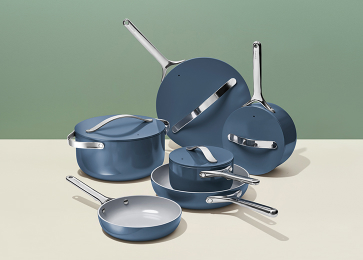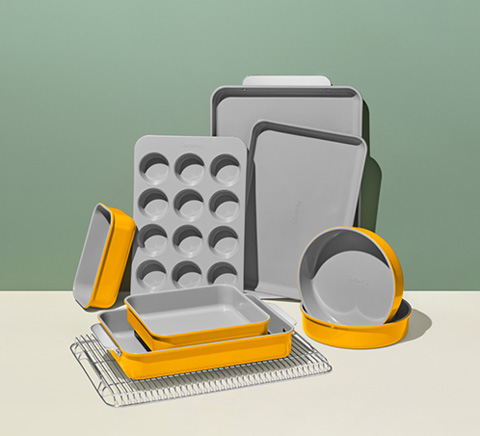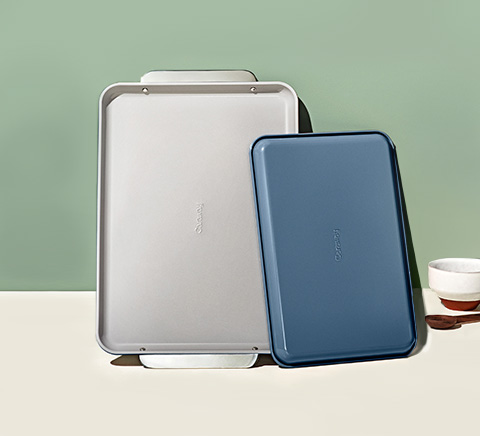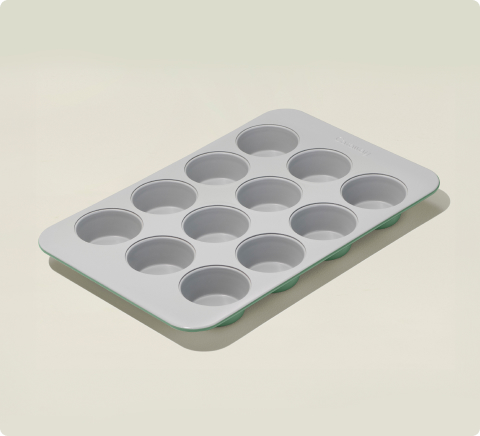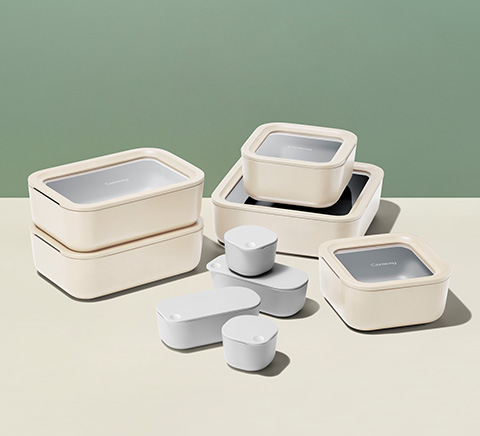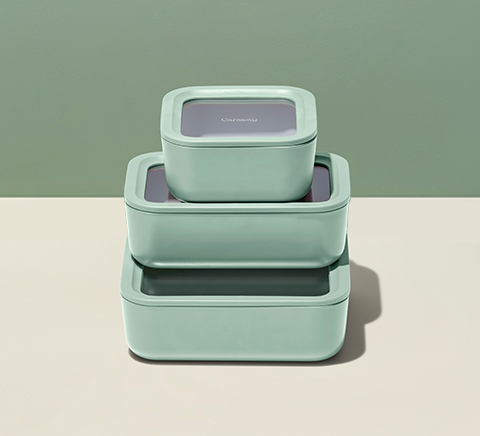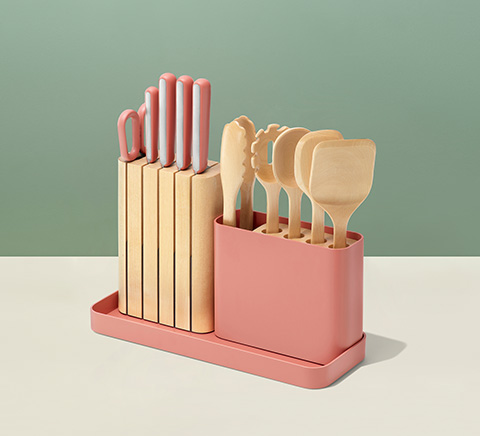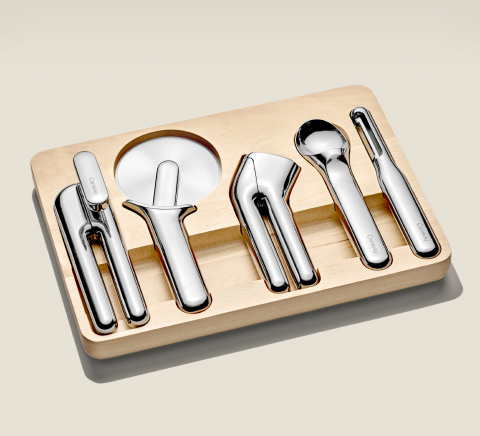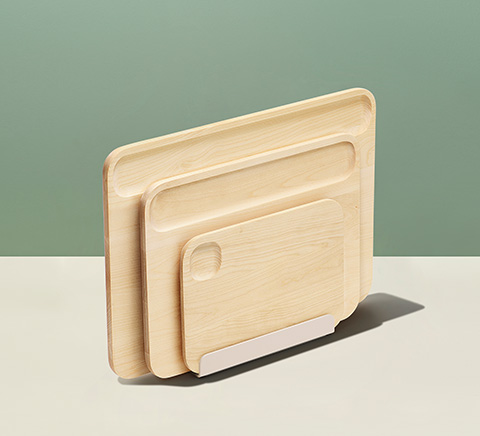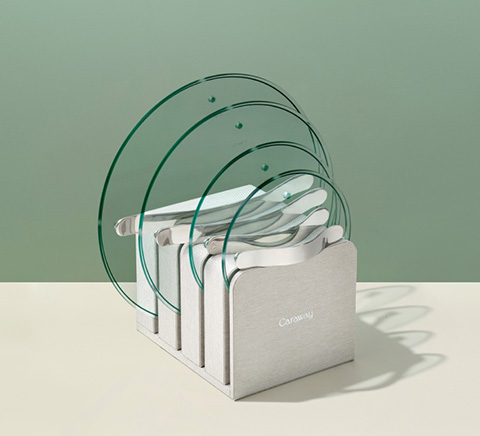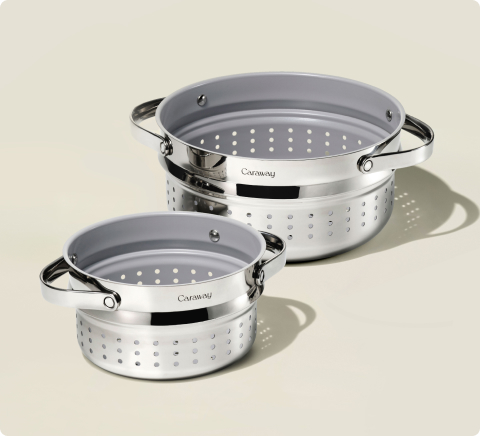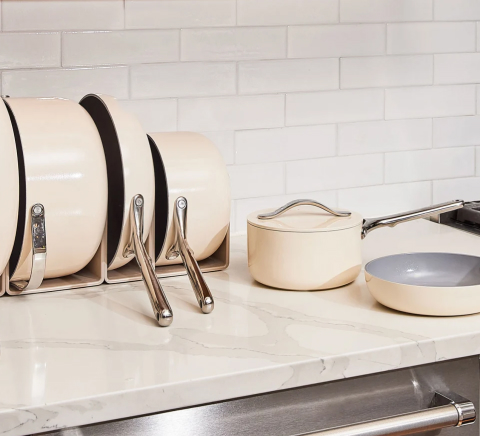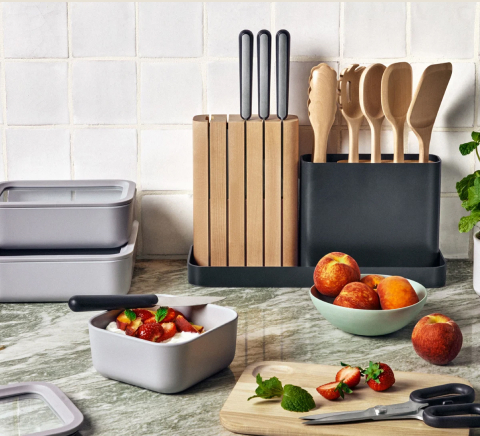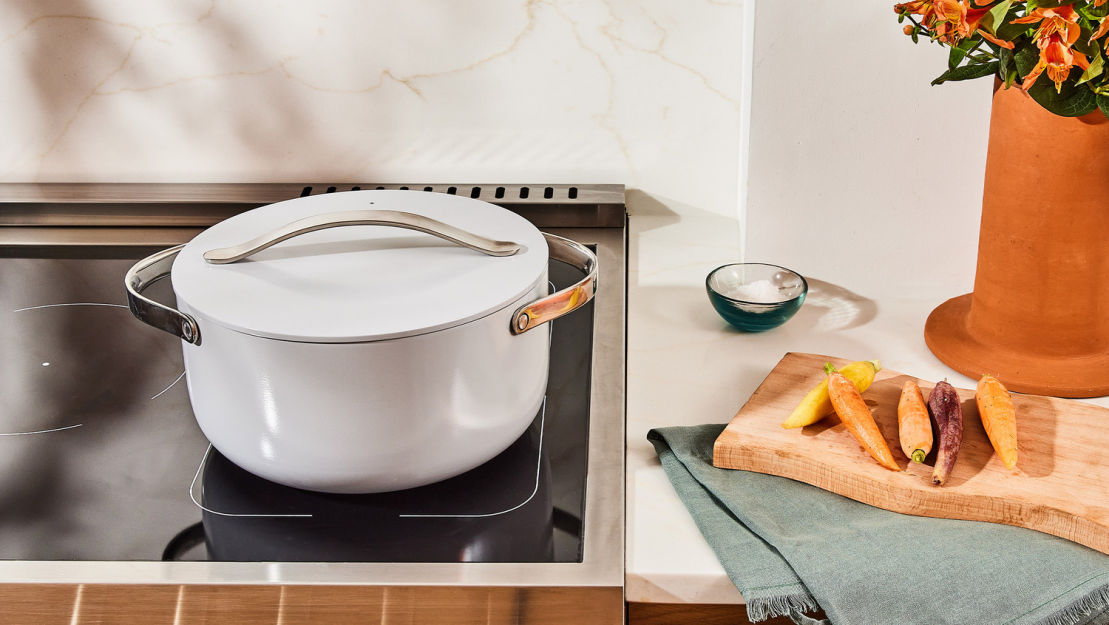There's something almost magical about a Dutch Oven. This classic kitchen staple, used by novice cooks and seasoned chefs alike, is a beloved piece of cookware.
At Caraway, we believe in the power of great cookware to inspire joy and creativity in the kitchen. That's why we're dedicated to crafting Dutch Ovens that meet the highest standards of quality and functionality and are also thoughtfully designed to be non-toxic and eco-friendly.
Join us as we explore how to keep your Dutch Oven in tip-top shape, ensuring it remains a treasured part of your cooking repertoire for years to come.
What Is a Dutch Oven?
A Dutch Oven is more than just a pot. Capable of baking, braising, boiling, and more, this indispensable tool has earned its place in the hearts and homes of cooks around the world.
Traditionally made from cast iron, the Dutch Oven is renowned for its exceptional heat retention and distribution, making it perfect for those slow-cooked stews and sumptuous soups that taste like home.
Why Is It Important To Keep Your Dutch Oven Clean?
Maintaining the cleanliness of your Dutch Oven is crucial for several reasons that affect both the quality of your cooking and the longevity of your cookware.
Here's why you should keep your Dutch Oven clean:
-
Enhances Cooking Performance: Regular cleaning ensures even heat distribution and prevents hot spots, making your Dutch Oven more efficient in cooking your favorite dishes.
-
Prolongs Lifespan: Dirt, grime, and leftover food can corrode and damage your Dutch Oven over time. Keeping it clean avoids such degradation, ensuring your cookware lasts for generations.
-
Prevents Flavor Transfer: Old, stuck-on food can impart unwanted flavors to your new dishes. A clean Dutch Oven means that every meal tastes exactly as intended.
-
Safety: The build-up of grease and food particles can become a fire hazard, especially on the stovetop. Clean cookware is safer to use and reduces the risk of kitchen accidents.
-
Non-Toxic Cooking Surface: For Caraway's ceramic-coated and stainless steel Dutch Ovens, maintaining the integrity of the non-toxic surface is crucial. Proper cleaning prevents the breakdown of this surface, ensuring you're always cooking in a healthy environment.
-
Aesthetic Appeal: Let's face it: cookware is part of your kitchen's charm. A well-maintained Dutch Oven can double as a piece of decor, proudly displayed on your stovetop or kitchen shelf.
-
Efficiency in Future Uses: A clean Dutch Oven is ready to use when you are, saving you time and effort in preparation for your next culinary adventure.
Keeping your Dutch Oven clean is an act of love---not just for the cookware itself but for the delicious meals it helps you create.
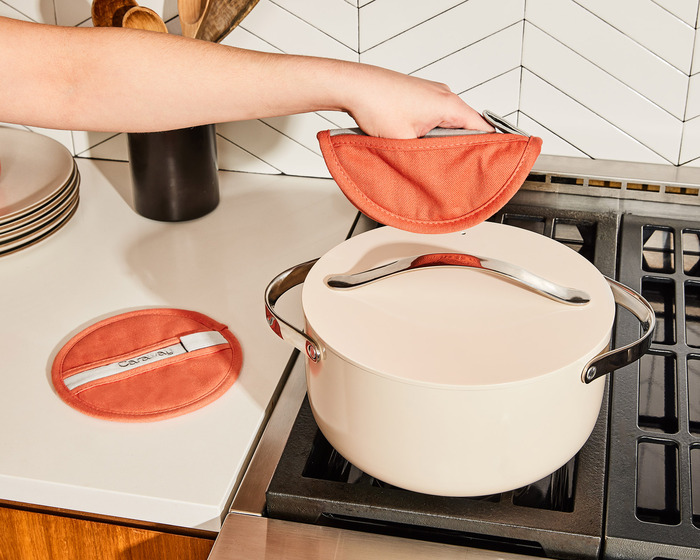
The Best Way To Clean a Dutch Oven
Cleaning your Dutch Oven doesn't have to be a daunting task. With the right approach, you can keep your cookware in pristine condition.
Here are the essential steps to effectively clean your Dutch Oven, ensuring it continues to serve you well for years to come.
Cool Down
Before you start cleaning, it's important to let your Dutch Oven cool down to room temperature. Sudden temperature changes can harm the cookware, especially if it's made of materials like enameled cast iron or ceramic-coated surfaces. Patience is key to preserving the integrity of your Dutch Oven.
Rinse With Warm Water
Once cooled, rinse your Dutch Oven with warm water to loosen any stuck-on food. Avoid using hot water immediately, as warm water is gentle yet effective enough to start the cleaning process. This step prepares the cookware for a more thorough cleaning without causing shock to the material.
Apply Dish Soap
Splash a bit of mild dish soap into your Dutch Oven, swirling it around with warm water to whip up a gentle, soapy mix. This simple yet effective concoction is all you need to cut through the grime, no matter what your Dutch Oven is made of.
Keep in mind that a bit of soap goes a long way-- too much, and you'll be rinsing forever; too little, and you won't see those suds dance. Keep it balanced to ensure your cookware comes out looking as good as new without any fuss.
Scrub Gently
For this step, use a non-abrasive sponge or scrubber to protect your Dutch Oven's surface. Harsh scrubbing can damage the finish, whether it's enameled cast iron or stainless steel. Focus on areas with burnt-on food, applying gentle pressure to remove residue without scratching the cookware.
Dry Thoroughly
After the suds have done their job, rinse your Dutch Oven with warm water and reach for a clean, soft cloth or a paper towel. Pat and wipe down every inch, inside and out, making sure not a single drop of moisture remains.
Store Properly
Finally, store your Dutch Oven in a dry place to prevent any moisture buildup. Leave the lid slightly ajar or store it separately to ensure your Dutch Oven can "breathe." This simple act can prevent any lingering moisture from becoming a problem down the line.
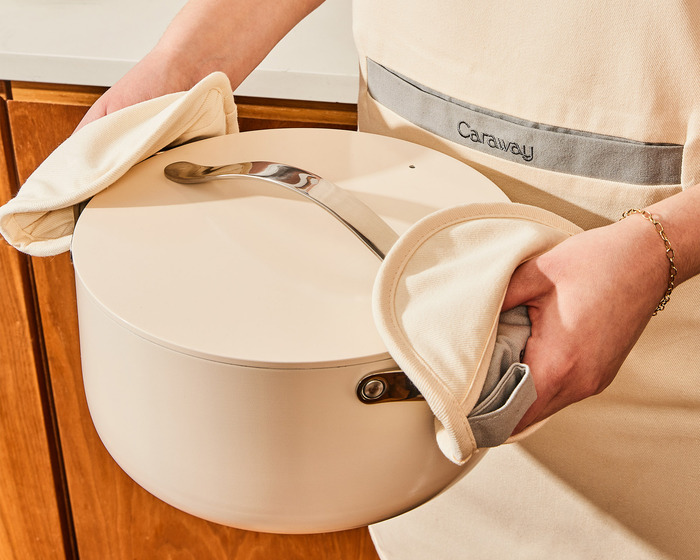
Special Considerations for Different Dutch Oven Materials
Cleaning your Dutch Oven does more than just keep it looking shiny. It ensures that every meal you cook is as delicious and safe as possible. However, not all Dutch Ovens are created equal, and different materials may require a slight tweak in your cleaning regimen.
Here's how to handle them with care:
Enameled Cast Iron Dutch Ovens
The beauty of enameled cast iron lies in its ease of maintenance and the ability to withstand more acidic foods without reacting. While its enamel coating eliminates the need for seasoning, it requires mindfulness to prevent chipping. Gentle cleaning without abrasive tools will keep the enamel glossy and prevent any damage that could affect its performance.
Ceramic-Coated Dutch Ovens
Our Ceramic-Coated Dutch Oven brings health and ease to the forefront of cooking. Its non-toxic ceramic-coated interior allows for many cooking techniques---from stews to bread baking---and ensures that cleaning is a breeze.
This type of Dutch Oven adds a cheerful burst of color to your kitchen, all while guaranteeing a safe, chemical-free cooking surface. To preserve this special coating, stick with soft sponges and mild soaps that clean effectively without harshness.
Stainless Steel Dutch Ovens
For those who lean towards the contemporary, Our Stainless Steel Dutch Oven marries the aesthetic with practicality. Its tough 5-ply steel construction can tackle any culinary challenge you throw at it, from simmering soups to braising meats.
This material's resilience against staining and rust makes cleaning straightforward, with no special seasoning required. A simple wash with soapy water and a gentle drying process ensures it remains ready for your next culinary exploration.
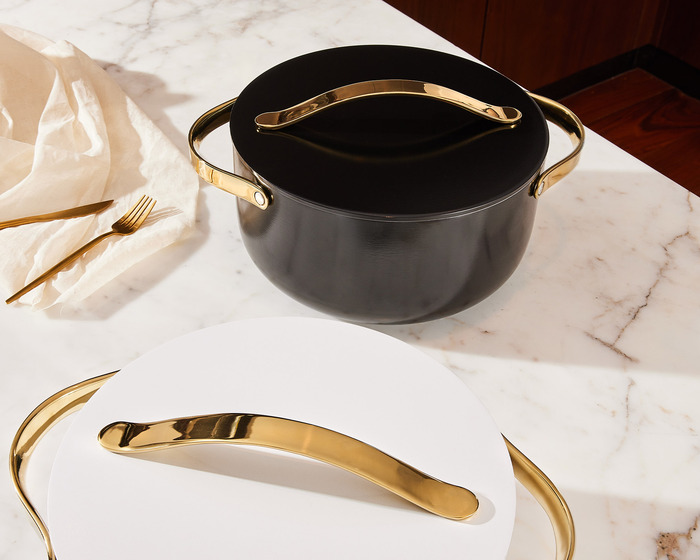
Tips for Tackling Tough Spots on Your Dutch Oven
When your Dutch Oven encounters the inevitable stubborn stains or bits of burnt-on food, a few targeted approaches can restore its pristine condition without compromising the cookware's integrity.
Here are concise, practical tips incorporating essential cleaning aids to tackle those challenging areas:
-
Baking Soda: For stains that resist initial efforts, sprinkle baking soda directly on the affected areas. Its mild abrasive nature helps lift the stains without scratching the surface of your Dutch Oven, which is especially valuable for enameled cast iron or ceramic-coated models.
-
Boiling Water Technique: Fill the Dutch Oven with water, add a few tablespoons of baking soda, and bring to a boil. The boiling water helps loosen burnt-on food, allowing you to easily scrape it away with a wooden spoon or scraper.
-
Hand Washing: After treating specific problem areas, give the entire Dutch Oven a thorough hand washing. This ensures that no residue from the cleaning agents remains, preserving the non-toxic cooking surface of ceramic-coated and stainless steel options.
-
Wooden Scraper for Burnt Food: Utilize a wooden scraper, carefully chosen to be gentle on the Dutch Oven's surface, to remove any remaining burnt-on food. This tool is particularly effective after the boiling water method softens the debris.
By following these tips, you'll be well-equipped to keep your Dutch Oven in top shape, ready for your next culinary creation.
The Bottom Line
Taking the time to care for your Dutch Oven is essential in keeping it among the best in your kitchen collection. At Caraway, we're committed to ensuring that our non-toxic, eco-friendly Dutch Ovens continue to help you create those magical meals, from hearty stews to freshly baked bread.
Let's make every meal memorable! Care for your Caraway Dutch Oven, and it will care for your culinary creations in return. Check out our Care & Cleaning cheat sheet for all of your kitchen cleaning needs.
Sources:
Cast iron | Definition, Composition, History, & Facts | Britannica
Why You Should Never, EVER Wash A Hot Pan In Water | HuffPost Life
How Dutch Ovens Do (Almost) All the Cooking for You | Food & Nutrition Magazine
